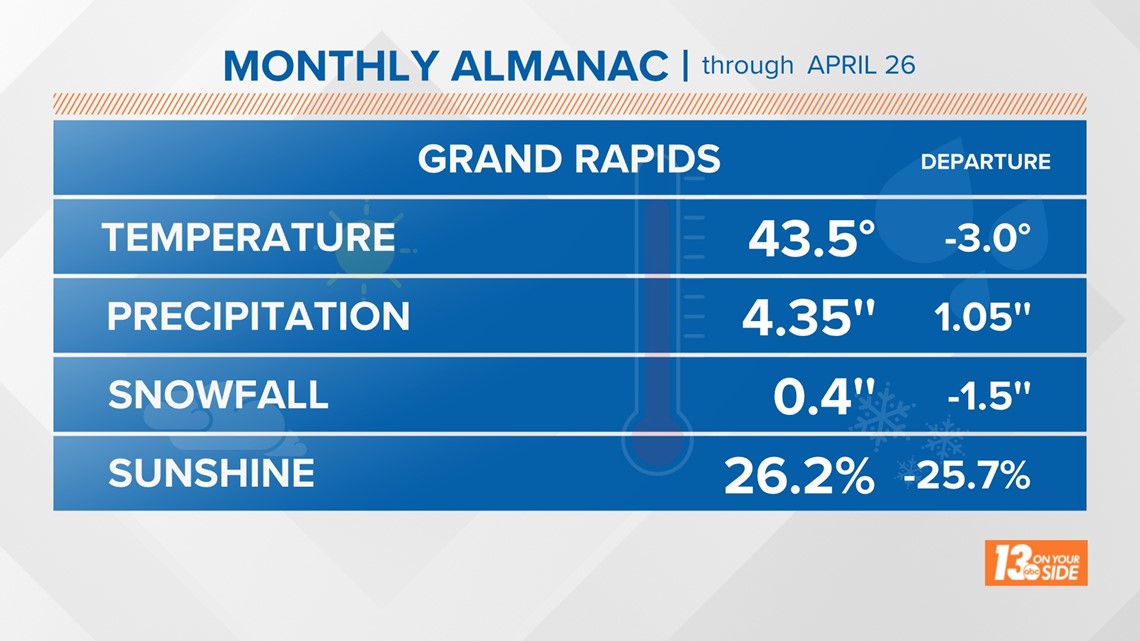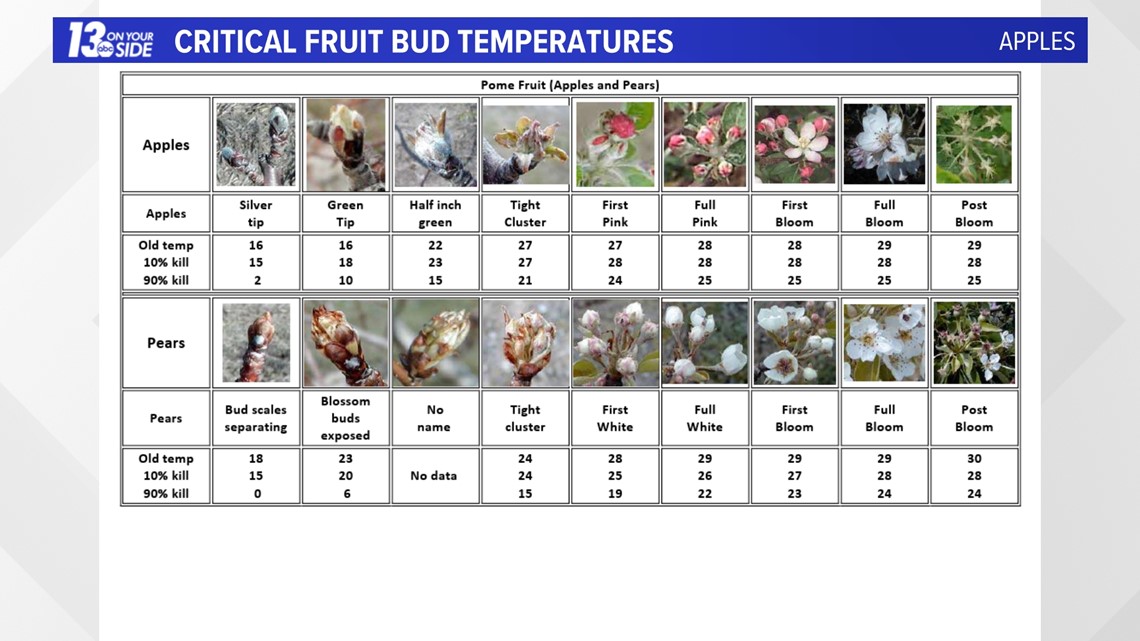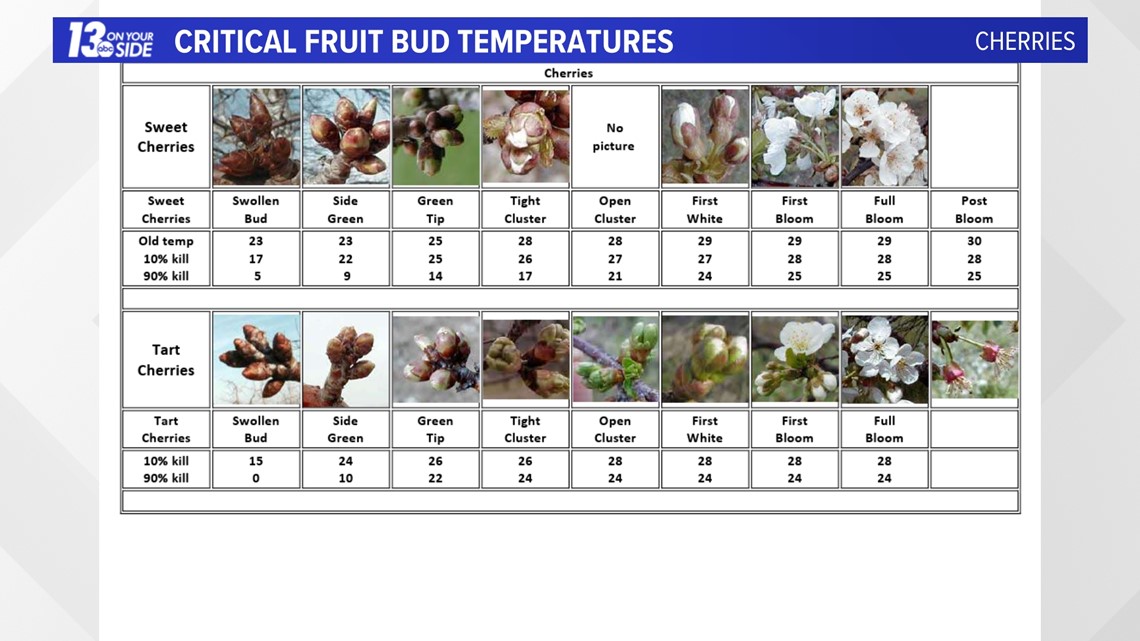GRAND RAPIDS, Mich. — The ups and downs of spring weather are no surprise to West Michigan, but this time of year is crucial to our budding fruit trees.
With the month of May only days away, spring bloom is underway for local fruit trees. The crop is highly dependent on the outcome of the spring season and its navigation between warmer and colder stretches.
Amy Irish-Brown of Michigan State University Extension discusses how the cooler spring, especially April, has fared well for local growers so far across much of West Michigan.
“I think fruit is faring very well,” Irish-Brown says. “We just didn’t have really good bloom coming into 2021. So the trees had a little bit of a rest. So this year, they are just loaded up with flower buds. So there’s great potential for a pretty big crop this year,” she adds.
In Grand Rapids, the spring season (for meteorological data, started March 1st) has averaged 1.1° below average, along with below-average possible sunshine. Furthermore, April has been approximately 3° below average, with only 26.2% of potential sunshine throughout the month (on track for one of the cloudiest Aprils of all time).




While this combination is not great for warmer outdoor recreation, the consistently cooler spring has kept the budding process in check. Irish-Brown explains that the Grand Rapids area is a few days behind the average development stage of perennials. This, in turn, has prevented fruit trees from being impacted by frost and freezes during nights of sub-freezing temperatures.
“And we like a slow start to spring in perennial crops. I haven’t met one tree fruit grower that’s upset by the cool weather,” Irish-Brown says. “Most farmers want things to get going, you know, get seeds in the ground. Well, we have perennial trees. They’re already in the ground. And we don’t like when Mother Nature does things too fast, because then the flower buds start coming out. And then they’re subject to the normal frost and freezes that we can get between now and the middle of May,” she explains.
Irish-Brown mentions that the current stage of development of fruit trees can handle sub-freezing temperatures, with the lower 20s the current danger zone to damage the crop widespread. As the fruits get closer to bloom, that threshold goes up, but the likelihood of sub-freezing temperatures decreases.






So far, it’s welcomed news after frost and freeze challenges the past few years for local growers. One downside of the cooler spring is a delayed start to annual plants.
“It’s good for the perennial growth fruit growers, like the fruit trees we have. Like I said, not so much for the annual growers, people that want to plant seeds or transplants,” Irish-Brown says.
As for fruits in West Michigan, apricots are generally the first to bloom. Other stone fruits, such as peaches, cherries, and pears come next. Apples usually come toward the end of the blooming season, with a few weeks difference from the middle of May to early June between the early to late varieties.
►Make it easy to keep up to date with more stories like this. Download the 13 ON YOUR SIDE app now.
Have a news tip? Email news@13onyourside.com, visit our Facebook page or Twitter. Subscribe to our YouTube channel.

